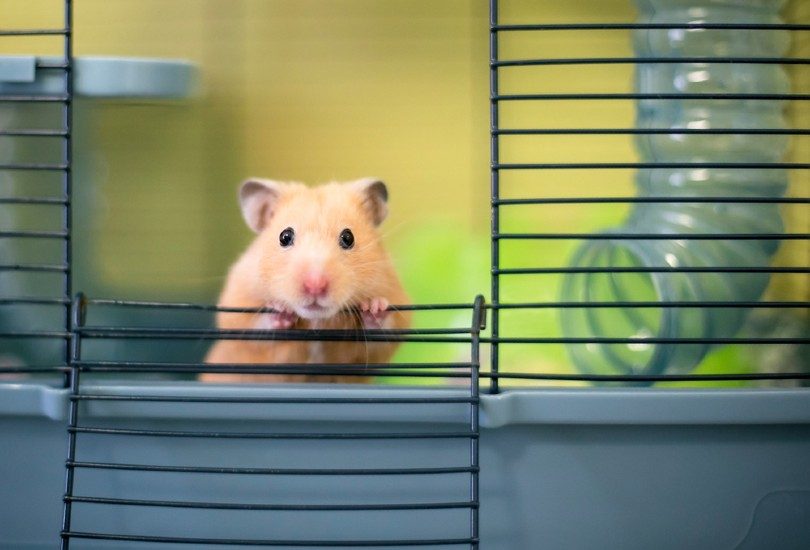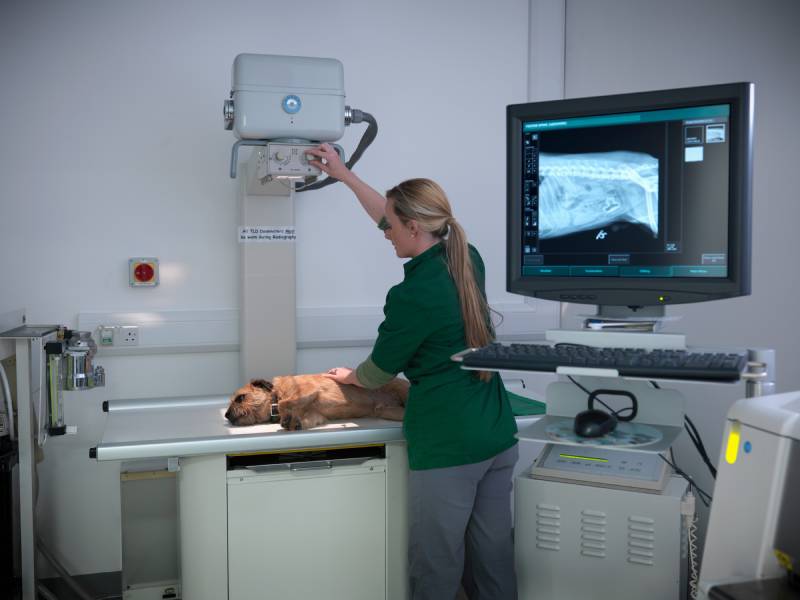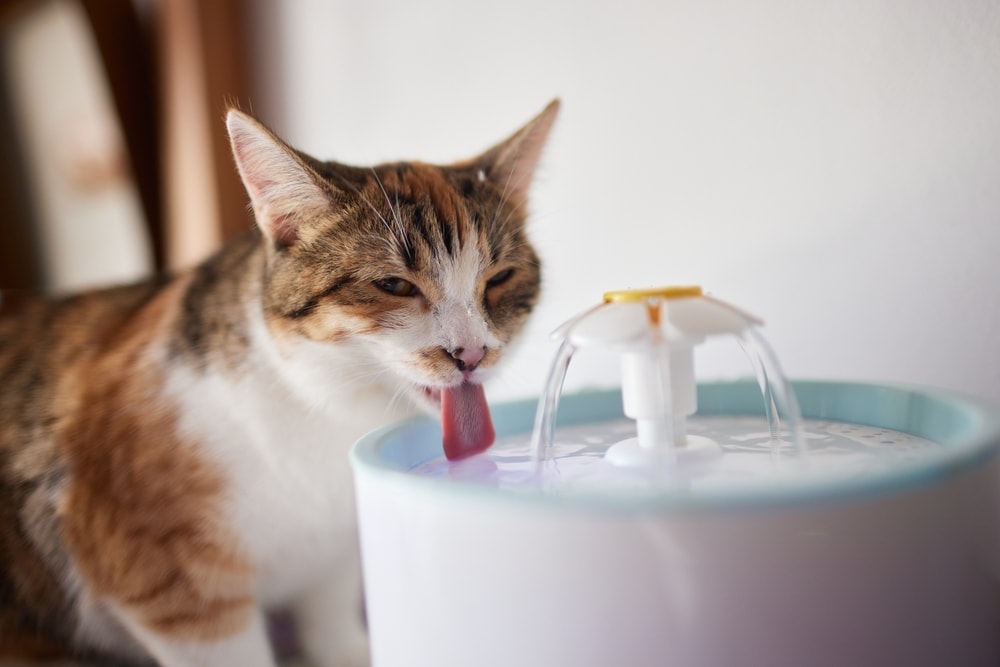When people think of a smelly pet, they often think about a large dog. But other pets can get smelly, too! Take hamsters, for instance. It’s surprising just how smelly something as small as a hamster can be. You don’t have to resign yourself to living in a smelly home because you have a hamster as a pet.
We’ll discuss five ideas and tips to help you and your hamster live together in harmony. Keep reading to learn more!

The 5 Ways to Get Rid of Hamster Smell:
1. Clean & Deodorize the Cage Often
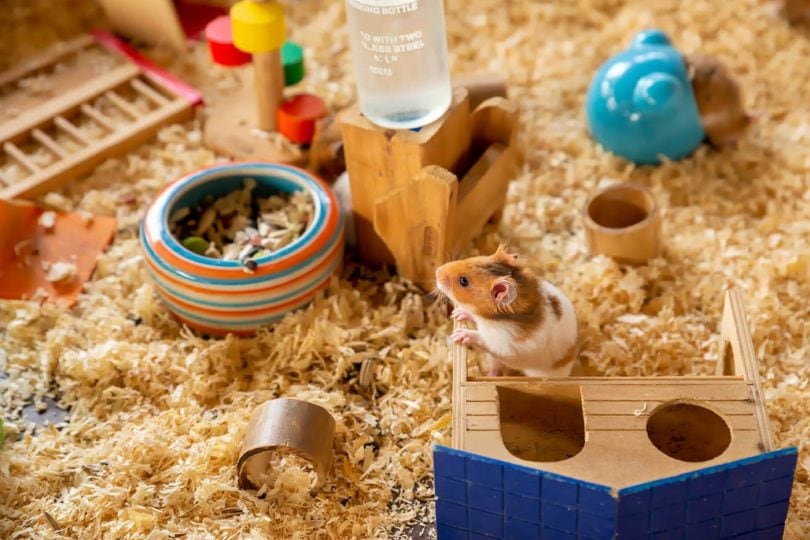
Your hamster’s cage needs to be cleaned and deodorized often. To begin the process, place your hamster in a safe place, such as a pet travel cage, and remove everything from the cage.
Shake out the bedding into a garbage bag. Do not shake it out in an area where you eat or prepare food, as critters like hamsters can carry bacteria like salmonella.
Once the cage is empty, use mild soap and hot water to scrub every nook and cranny. You’ll also want to wash out their bowls, accessories, and toys.
The next step is to deodorize the cage. You can use a commercial cleaning product with enzymes to help combat lingering scents or go the household cleaner route and use baking soda or vinegar. Sprinkle some baking soda into the cage and wipe it out with a warm, wet sponge or cloth. To use vinegar, wet your sponge with it and wipe down the cage with the sponge.
Once you’re sure you’ve cleaned every inch of the cage, give it a thorough rinse. You don’t want any lingering residue of soap or cleaning chemicals in the cage. Let the cage dry before putting in fresh bedding and returning your hamster and his personal effects.
You should perform a deep clean of the cage once a month. You may want to try using an enzymatic cleaner.
If you're trying to find an enzyme cleaner that does it all, we highly recommend our favorite cleaner, the Hepper Advanced Bio-Enzyme Pet Stain & Odor Eliminator Spray.
| Rating | Image | Product | Details | |
|---|---|---|---|---|
 |
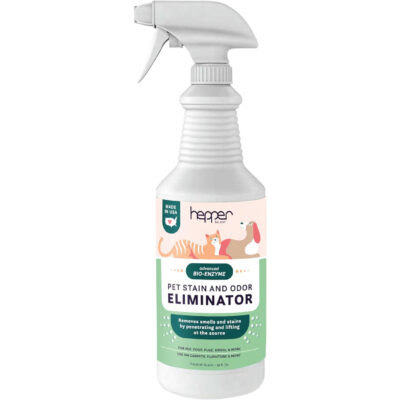 |
Hepper Advanced Bio-Enzyme Pet Stain & Odor Eliminator Spray |
|
CHECK PRICE |
It permanently removes the very worst stains and smells you can imagine and makes clean up a breeze. There's even a 100% satisfaction guarantee! Click here to order a bottle today.
At PangoVet, we’ve admired Hepper for many years, and decided to take a controlling ownership interest so that we could benefit from the outstanding products of this cool cat company!
2. Choose the Right Bedding
The wrong bedding in your hamster’s cage can add to its overpowering scent. Choosing the right type of bedding can make all the difference. You’ll want something that will be easy for your hamster to nest and burrow in. The perfect bedding is also water-soluble, so if your hamster ingests it, they’ll be able to digest and expel it without problems.
Line the cage floor with one or two layers of newspaper. This will create a barrier between the cage bottom and the bedding you use and make cleaning up much easier.
Shredded newspaper or aspen shavings are popular picks for cage bedding. Lay one or two inches of the bedding on top of your newspaper lining for a cozy substrate your hamster will love.
Do not use pine or cedar shavings, as they can put your pet’s delicate respiratory system at risk.
You should change out the bedding every week.
3. Spot Clean Everyday
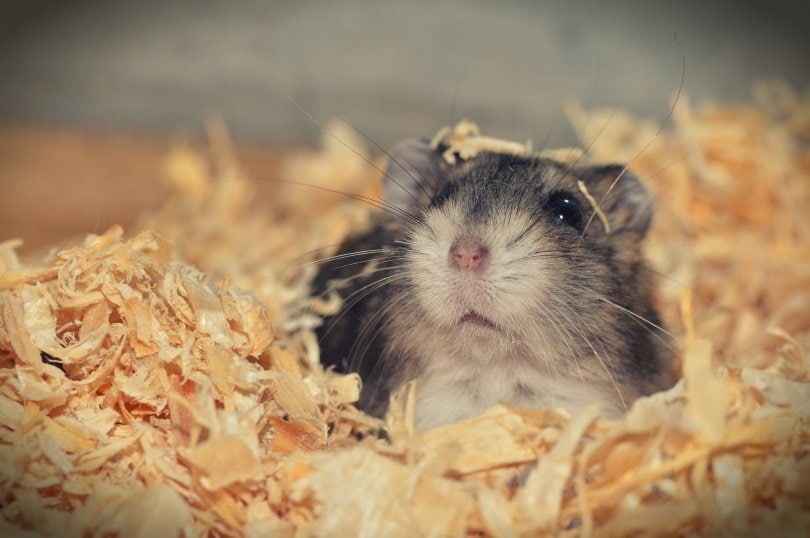
The most effective way to prevent hamster-related scents is to set aside time every day to spot clean. Remove any bedding on which they have urinated or defecated, and refill the area with fresh bedding. If you notice they have soiled their wheel or other toys, bring them out of the cage and give them a good wash, too.
Make sure to bring out their water bottles and food bowls and clean them every day. You wouldn’t like to eat off a dirty plate, and neither would your hamster. Plus, clean bowls can reduce the risk of their water or food becoming contaminated.
The better job you do at spot cleaning, the less difficult, more in-depth weekly and monthly cleans will be.
4. Litter Train Your Hamster
Litter training critters isn’t as hard as you might suspect. Hamsters are rather clean animals, so they tend to choose one spot in their cage to go to the bathroom. Your job is to find the spot they prefer to use the bathroom and make that the new litter box’s location.
Once you find a box to store your hamster’s litter, you’ll need to fill it.
Chinchilla sand is a cheap and convenient litter option, as your hamster will like digging and peeing in it. However, sand won’t keep the scent of urine at bay, so you’ll need to change it often.
Critter Litter is a commercial product you can find at your local pet store. It’s made with non-toxic materials and is very absorbent. It’s easy to scoop and can keep the smell of litter to a minimum. If your hamster starts eating the litter, you could be looking at health issues. If you know your hamster to be a chewer, you might want to consider another option.
Paper pellet litter is easy to find at any pet store. You can also DIY this by tearing up strips of paper or using a paper shredder. Paper will absorb urine quite well and is easy to clean.
Once you fill your litter box, add some of your hamster’s soiled bedding or a few of their droppings into the box. This will signal to your hamster that the litter box will be the new spot they are supposed to void. Place the box in the area of the cage where you know your pet likes to pee.
Put him into the litter box and let them explore it. Do not force them to stay in there.
Don’t be surprised if your hamster won’t defecate in the litter box. If they choose to urinate in there, consider it a win.
5. Use an Air Purifier
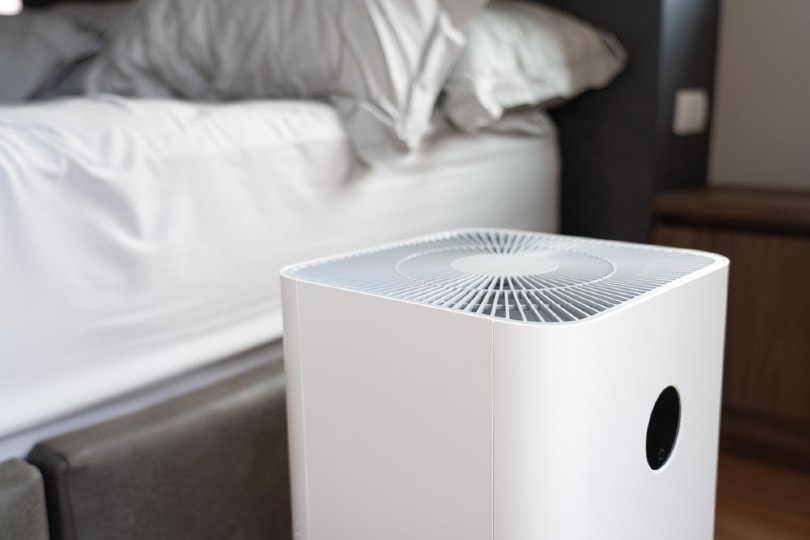
A high-quality air purifier can help combat a wide variety of household scents. While candles and essential oil diffusers leave a lovely scent behind, they are only effective at covering up scents. An air purifier can remove the contaminants that cause some odors in the first place.
The thing with air purifiers, however, is that they’re designed to work in conjunction with other odor-removing techniques. Your goal should be to remove or reduce the sources of the scent first and then use your air purifier as a supplement to control the odors.

Final Thoughts
Your home doesn’t have to smell like you have hamsters (even if you do). Take five minutes of your time every day to remove soiled bedding and 20 minutes a week to completely clean, and deodorize the cage and you’ll be surprised at how little your home smells like your fuzzy little critters.
See Also:
Featured Image Credit: Mary Swift, Shutterstock
